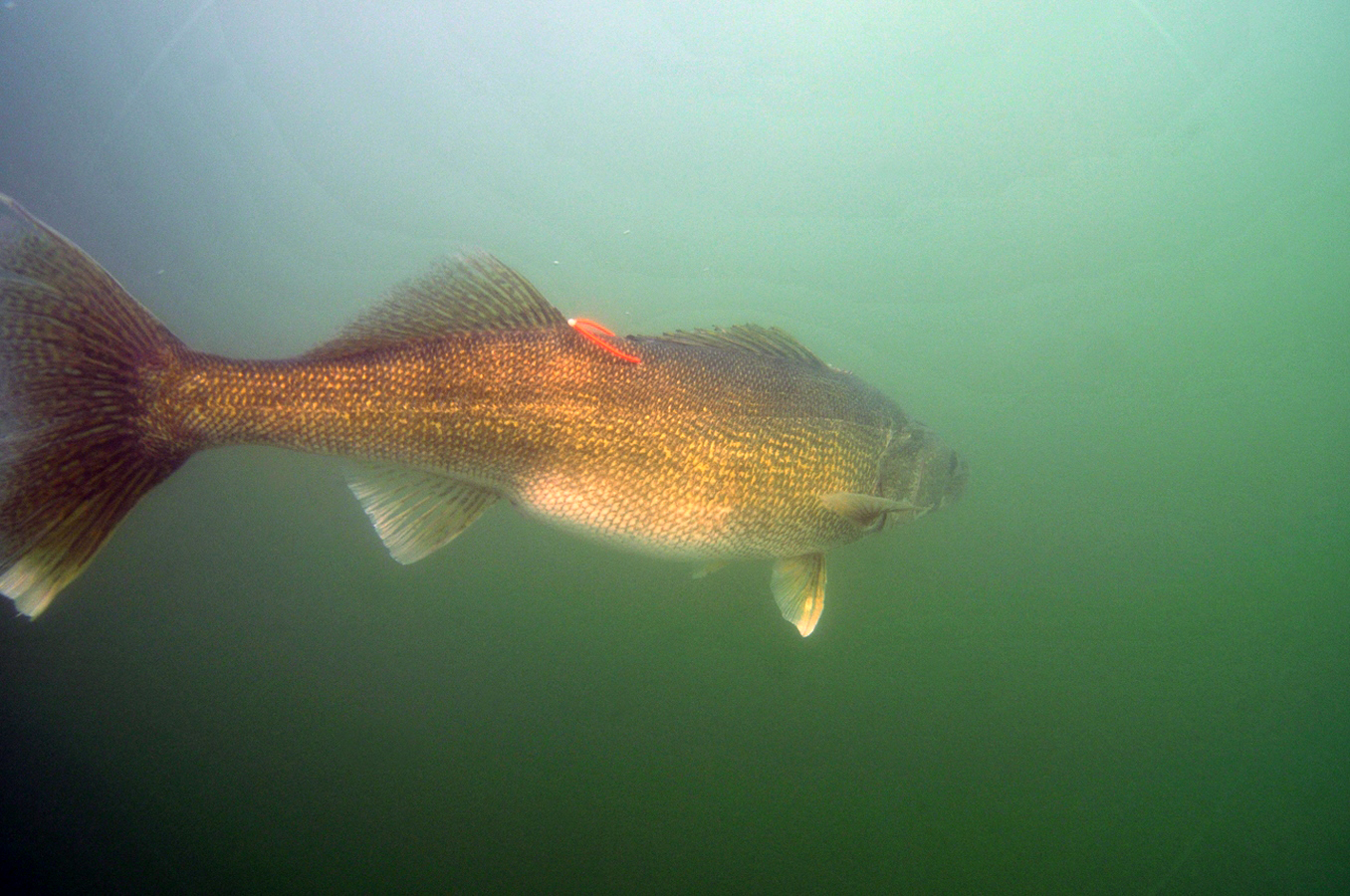I’M SEVEN MILES offshore from Lorain, Ohio, being verbally abused. To get here required an alarm set for well before dawn, an hour-long drive from my motel, and a backbreaking run across a Lake Erie that woke up on the wrong side of the bed. It’s the kind of rough that’s not so shitty you need to call it off, but shitty enough that your calves and ankles are going to feel it later from helping you keep your balance all day. I’m trying to get into a good position to crank in a fish, but I’m not getting there fast enough for a frantic Captain Ross Robertson.
“You need to move to the front of the boat right now!” he yells. “How am I supposed to reach the tip of the rod when the fish gets close if you’re standing there? We really need to get the communication going here, or this just ain’t gonna work!”
But this time there’s no marlin or money at stake. I’m fighting a walleye. Or at least, I think I’m fighting a walleye. There’s 150 feet of monofilament, a banana weight, and a big planer board between me and the fish. It feels slightly heavier, I suppose; the rod is bent a little deeper than it was while just dragging the planer on the troll. If I do anything but reel steadily while standing like a statue, I’ll be hollered at again.
I get that walleye tastes good, but unless the sole objective is meat on the table, I’ve never understood why people do this. Not when you have smallmouths, muskies, pike, lake trout, and steelhead swimming in the same waters. All I can think when the 15-incher finally hits the net is, Why do people put so much effort into a fish that fights like a wet paper towel?
But they do. Thousands of them. The fishing culture around Lake Erie is so heavily driven by walleyes that the zealotry helped launch one of the most advanced migration studies in fisheries science history. More is known about the movements of these fish in a single body of water than about any other game fish in the country. It’s the fisheries version of Big Brother, but the constant eye in the sky—or, in this case, ear to the water—is tuning in to help the walleye addicts get their fix more effectively for decades to come.
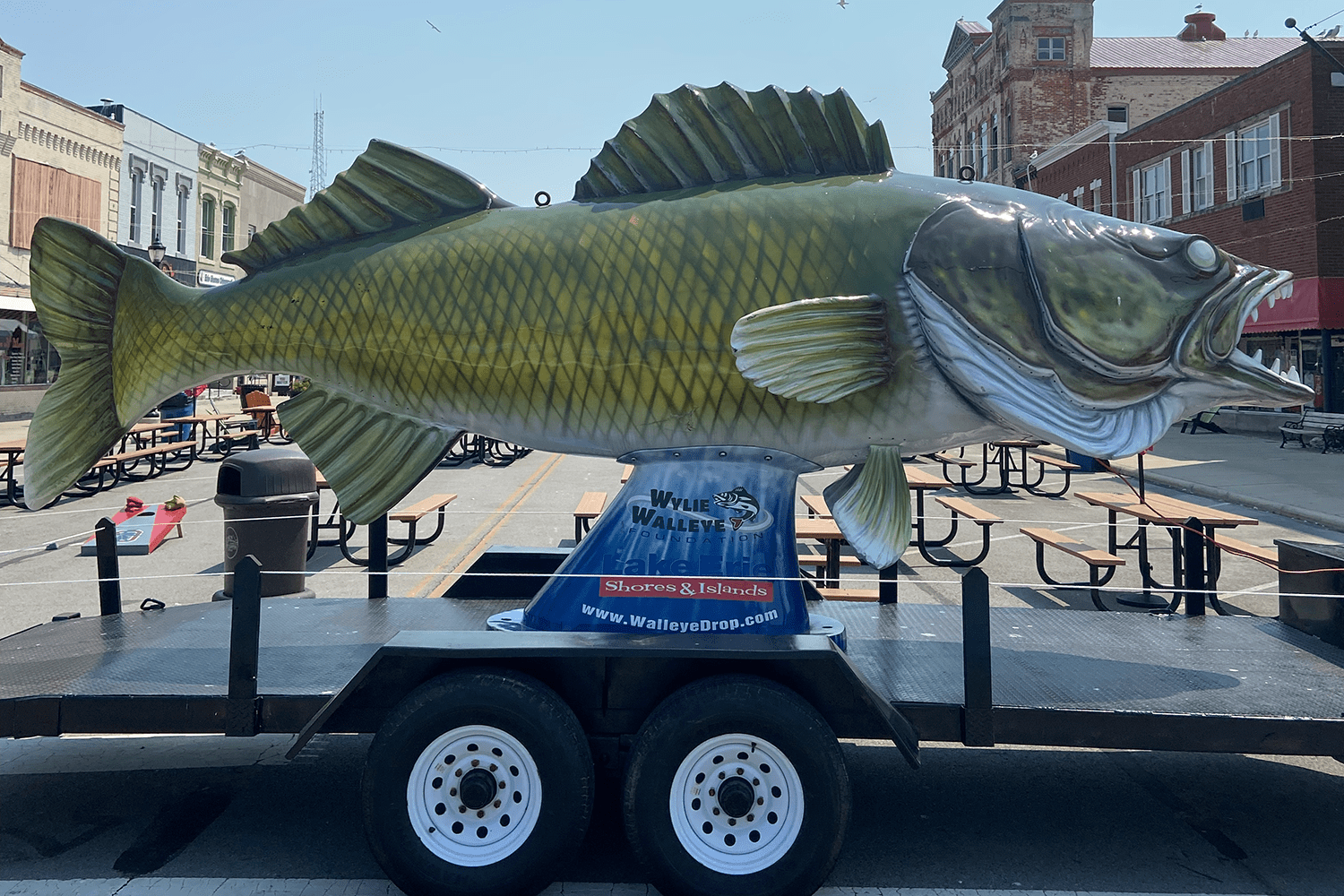
Raised in Walter World
Robertson and I have been friends for years. Our relationship is rooted in constant ballbusting, so even when he’s snappy and curmudgeonly, I enjoy it and fire right back. On the way to the bar after that long, rocky day on the lake, I stop to admire the 20-foot walleye mounted on a trailer parked smack in the middle of downtown Port Clinton—the Walleye Capital of Ohio. It’s ready to be hitched up at a moment’s notice for any parade, festival, or carnival that requires a giant dose of walleye pride.
“I’m pretty sure this was built to show people exactly how big a walleye would need to be to engage the drag,” I say with a smirk. Robertson hits me with a few expletives and off we go.
Robertson, 43, is originally from Toledo and has been guiding on Erie since he was in college. He’s damned good at his job. Although I may not be as smitten with the target as he and the locals are, I’m in awe of the skill and craft that go into catching big walleyes consistently. Watching Robertson work feeds my inner fishing geek’s need to understand what makes this fishery tick. He’s precise, methodical, organized, and incredibly dialed in. Despite those nasty conditions, we stayed away from the fleet and barely went 10 minutes without a bite. Our biggest fish measured nearly 30 inches, but the scuttlebutt at the ramp suggested most people were struggling to catch a limit of keepers (six fish, each a minimum of 15 inches). On Lake Erie, Robertson’s ability—and the reputation that comes with it—is comparable to that enjoyed by the star quarterback in a Texas high school football town.
“There are so many people who walleye fish along the lake that it’s like a conversation piece,” he tells me. “Even if you’re not really that into it, you can still talk about walleyes. And because there are so many walleyes in Lake Erie, I think even more people fish for them here because it’s easier to have those lights-out days. With all due respect, I’d say that a lot of people who fish Erie would have a hard time catching a limit in Minnesota or North Dakota because there just aren’t as many fish.”
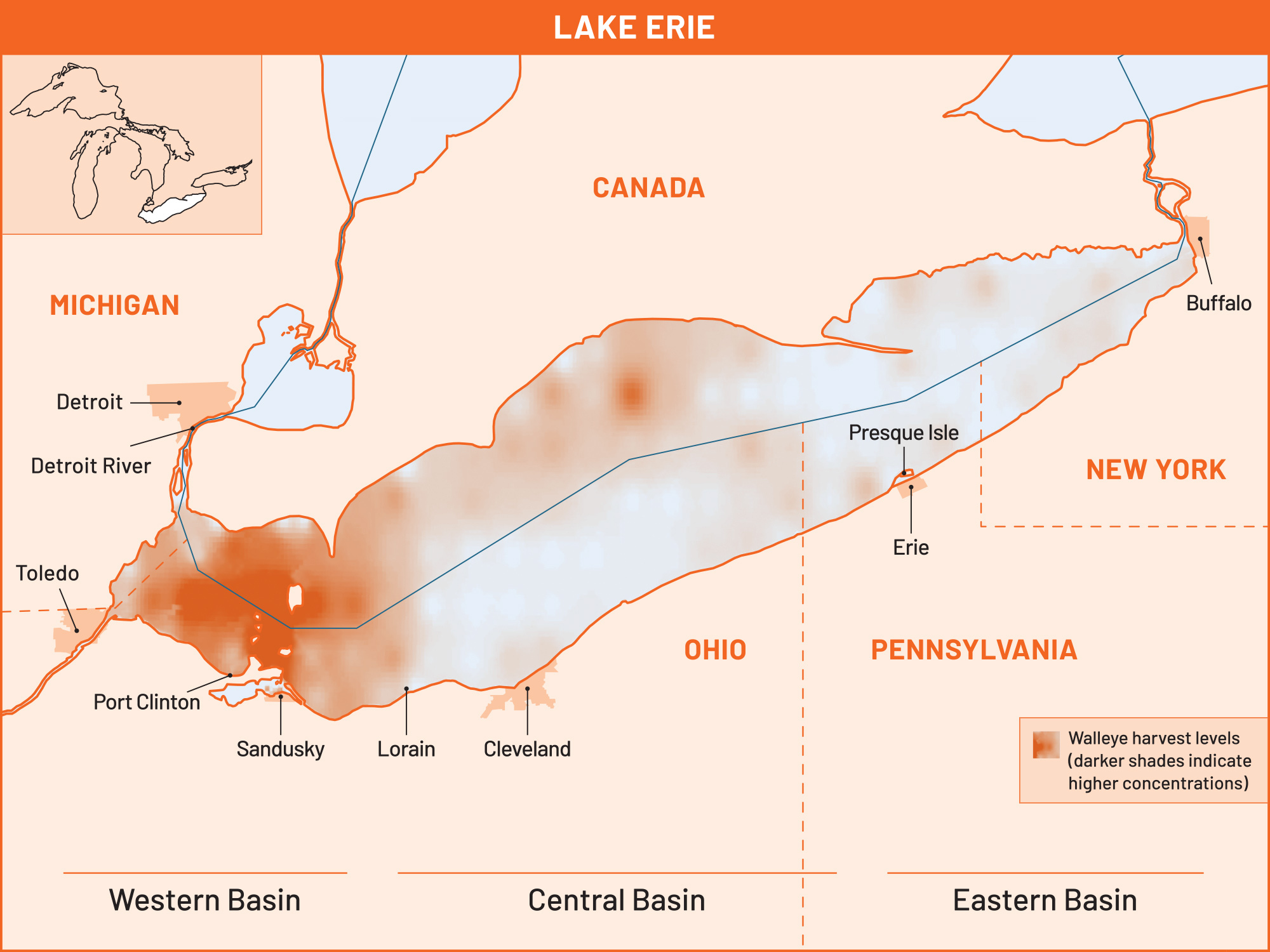
Some 2.5 million pounds of walleye were harvested from the lake in 2021, according to the Ohio Division of Natural Resources and its Division of Wildlife. Ten years earlier, that number was just 417,000 pounds. Step back to when Robertson was born, and the number was dismal. In the 1970s, Erie was plagued by industrial pollution. By the mid 1980s, cleaning efforts were beginning to show positive effects, and the walleye population roared back.
“When I was a kid, I don’t think the bass population had really come back yet. Or maybe we just didn’t know how to fish for them, but all you heard about was walleyes,” Robertson says. “So when you’re trying to understand what makes the locals so walleye obsessed, I think it’s just a product of growing up with incredible walleye fishing in your backyard. It’s no different from a kid growing up on Lake Okeechobee being obsessed with largemouth bass.”
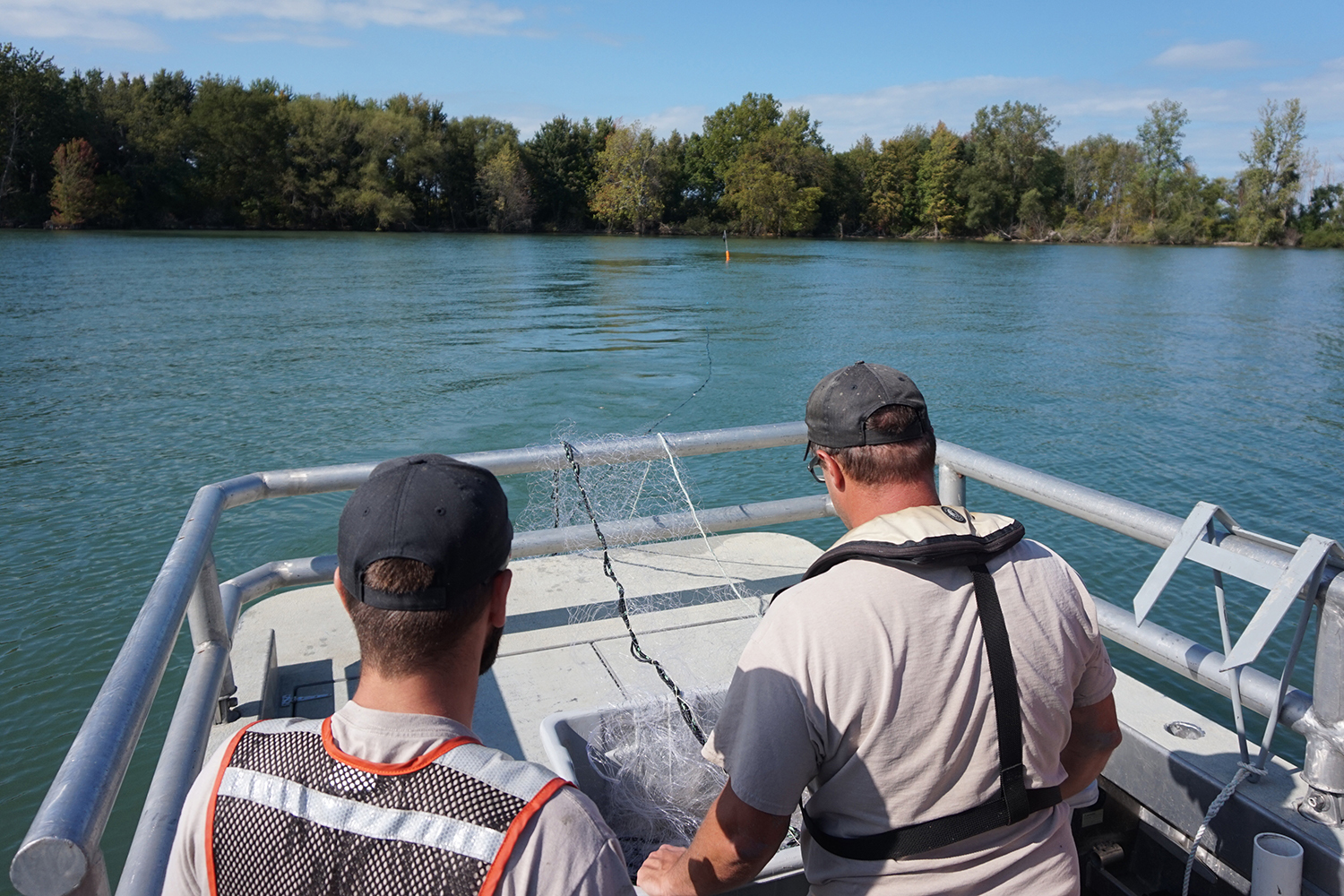
Now that it has reached that status and become such a boon for the economy, it’s the Ohio Division of Wildlife’s job to maintain Erie’s top ranking. But the lake covers 9,940 square miles. Within those depths, walleyes follow migration patterns that are, in some ways, more complex than those of famous travelers that have an entire ocean at their disposal, like Atlantic salmon and striped bass. So how do you effectively monitor the health of a species that has 241 miles to roam east to west, and 60 miles north to south? You crank up the volume.
Sounding Board
Lake Erie boasts the largest naturally reproducing population of walleyes in the U.S. Unlike in countless bodies of water across the country that rely on hatchery fish to bolster numbers, no walleye stocking has ever occurred in Erie. Because of this, it’s even more critical that state agencies and the Canadian government work together to keep tabs on the biggest moneymaker in the lake. Everyone does their part, but the charge is squarely being led by Ohio.
Matt Faust, a fisheries biologist with the Ohio DOW, has been entrenched in the state’s walleye acoustic telemetry study for the last eight and a half years. At this moment, there is a listening device placed every 7 to 15 kilometers along the lake bottom, plus some in Lake Huron for good measure. (Erie walleyes can move between the lakes via the Detroit River.) They receive pings from walleyes implanted with micro acoustic tags 24 hours a day, 365 days a year. In other words, a tagged walleye can’t swim anywhere in Lake Erie without being tracked.
It costs roughly $500,000 a year to keep this study up and running, according to Faust. That’s for a combination of buying expensive equipment, paying staff, and running and maintaining a fleet of military-like research boats docked at HQ in Sandusky, the biggest of which measures 53 feet. It’s not a cheap operation, but after nearly 12 years of data collection, the effort has produced something invaluable: the ability to know where the bulk of the walleyes are in the lake at any given time.
Getting to this point, however, was a long road with humble beginnings.
“We’ve been interested in knowing more about how the walleyes move around the lake since this fishery first started being heavily managed,” Faust tells me. “So in the late ’80s, that started with jaw tags. Multiple state agencies were involved, and hundreds to thousands of fish would be netted and tagged every spring. It was the best way at the time to look at not only where they’re moving, but also to estimate their survival and exploitation rates from birth to maturity.”
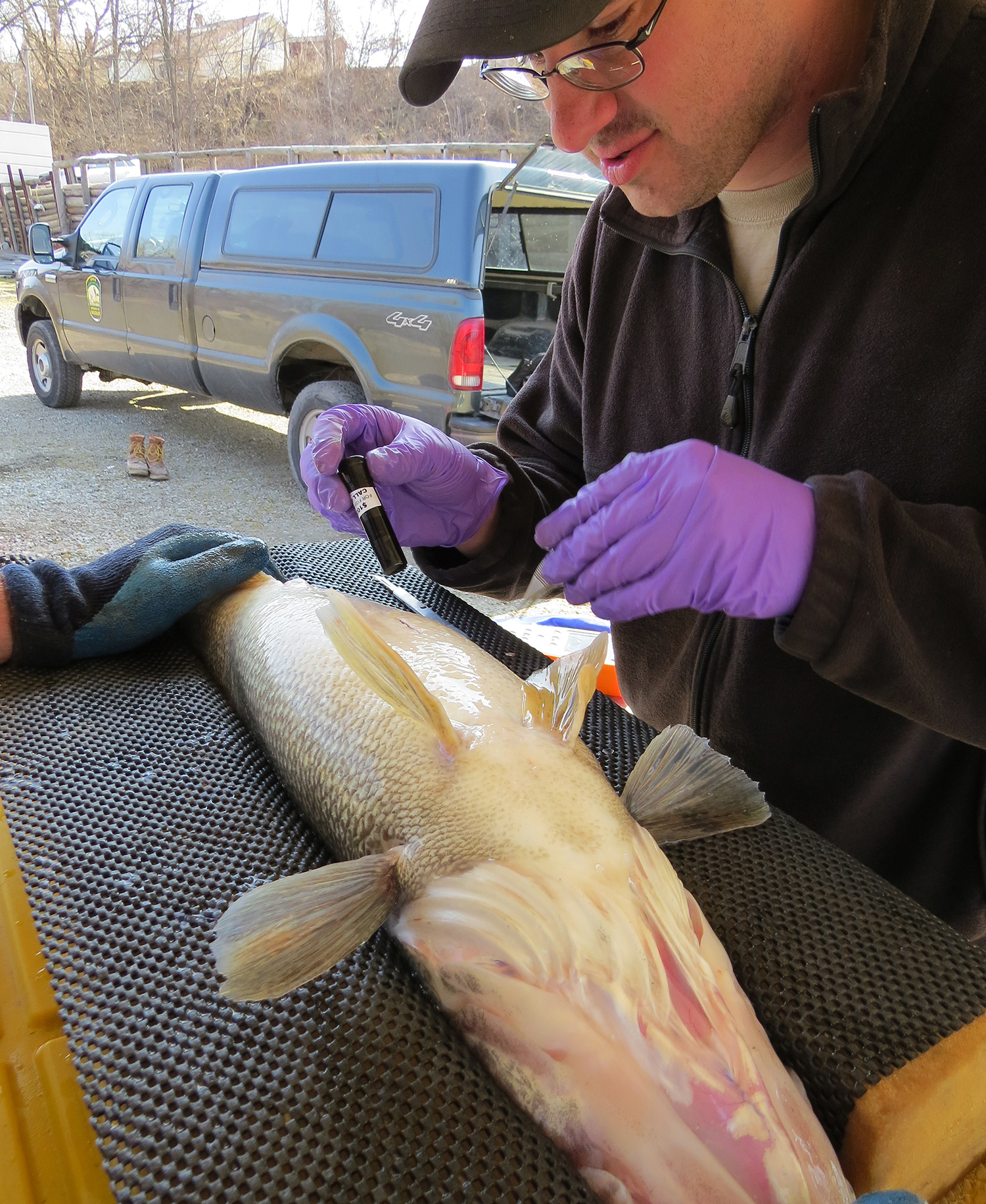
“I caught one around Halloween pretty close to Port Clinton, so I called the DOW and read the number,” Robertson says. “My buddy over there asked me to read it again. It was like he thought I was screwing with him. The fish had only been tagged in September, but it had been tagged in Thunder Bay on Lake Huron.”
In that short time, that walleye had covered roughly 260 miles, navigating the St. Clair River, Lake St. Clair, and the Detroit River, to wind up back in the Western Basin of Erie and in Robertson’s net.
’Eyes on the Data
The odds of Robertson catching that fish are almost as low as winning the lottery. But that’s the beauty of the acoustic telemetry study: The DOW can get better tracking data faster, while physically tagging far fewer fish than it did during the jaw-tag campaign.
Ohio’s acoustic telemetry study got off the ground in 2010 as a direct result of the Great Lakes Restoration Initiative, a program started during the Obama administration that provided a huge influx of funding to all the Great Lakes. Luckily for the DOW, both the Trump and Biden administrations upheld the initiative, allowing the telemetry study to grow and thrive. But the trick to making it a success, according to Faust, was figuring out which fish to tag.
“Just while I was on the lake so far this year, I tagged around 70 fish,” he says. “But last year I tagged almost 200. Since the program started, I would estimate roughly 2,000 fish have been implanted with acoustic tags, and we tag approximately 50 to 100 fish a year on average. While we’re tagging fewer fish, we’re doing everything we can to make sure those fish are representative of the larger lake populations. So when we started tagging, we were going out during April or early May. One day maybe you’re getting smaller, younger males, so we fish a different place next time to get the bigger females. It’s not like we’re just tagging every fish that we catch, trying to make sure a certain number of tags are deployed.”
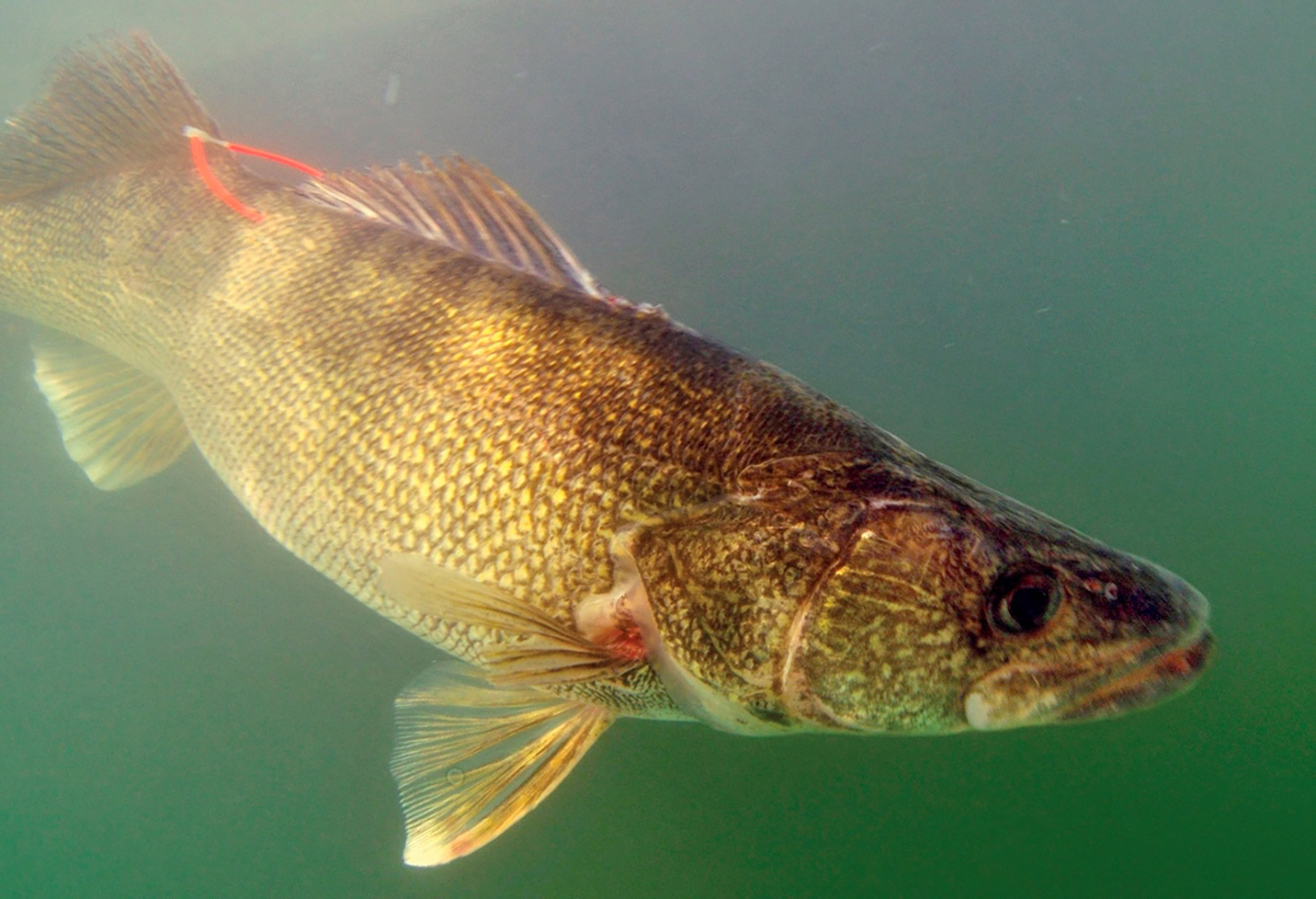
Since the program aims for a variety of different-size fish from different areas of the lake, a ping from a tagged fish or two is enough to let the DOW extrapolate that they are likely moving with a bigger body of like-size walleyes. In the early days of the program, there were only a handful of receivers, located at strategic pinch points the DOW thought a large percentage of walleyes would pass through over the year. Now, with so many more receivers underwater—including right in the middle of the lake—there’s very little lag in data.
“During the jaw-tagging days, we were used to, say, 100,000 lines of cumulative data in a year being a lot,” Faust says. “Now, considering the acoustic tags last about a year and a half inside a fish, you can potentially get a million detections from a single tag.”
The study, in essence, has given Lake Erie’s walleyes no place to hide. The question is, Now that the DOW can find them and track them, where exactly are they going? And more importantly, how is this benefiting the legions of walleye-hungry anglers around the lake?
Twists and Turns
In 2014, there were 682 licensed fishing guides on Lake Erie, per the Ohio DOW. In 2022, there are 900. The spike can, in no small way, be attributed to the 2015 walleye spawn, which was one of the most successful in the history of the lake. According to Faust, while nobody can say for certain what generates ideal spawning conditions, good ice coverage in winter coupled with elevated water levels in spring seems to help. It’s estimated that the 2015 class alone added millions of new walleyes to the system. The spawns the following years were almost as good. The more fish there are in the lake, the more likely it is you’ll catch one, and, therefore, the more people decide they’re good enough to make a buck putting paying sportsmen on them. The downside to these epic spawns, however, is that now there are lots of small fish that need time to mature—and that anglers like Robertson need to sift through to find the giants.
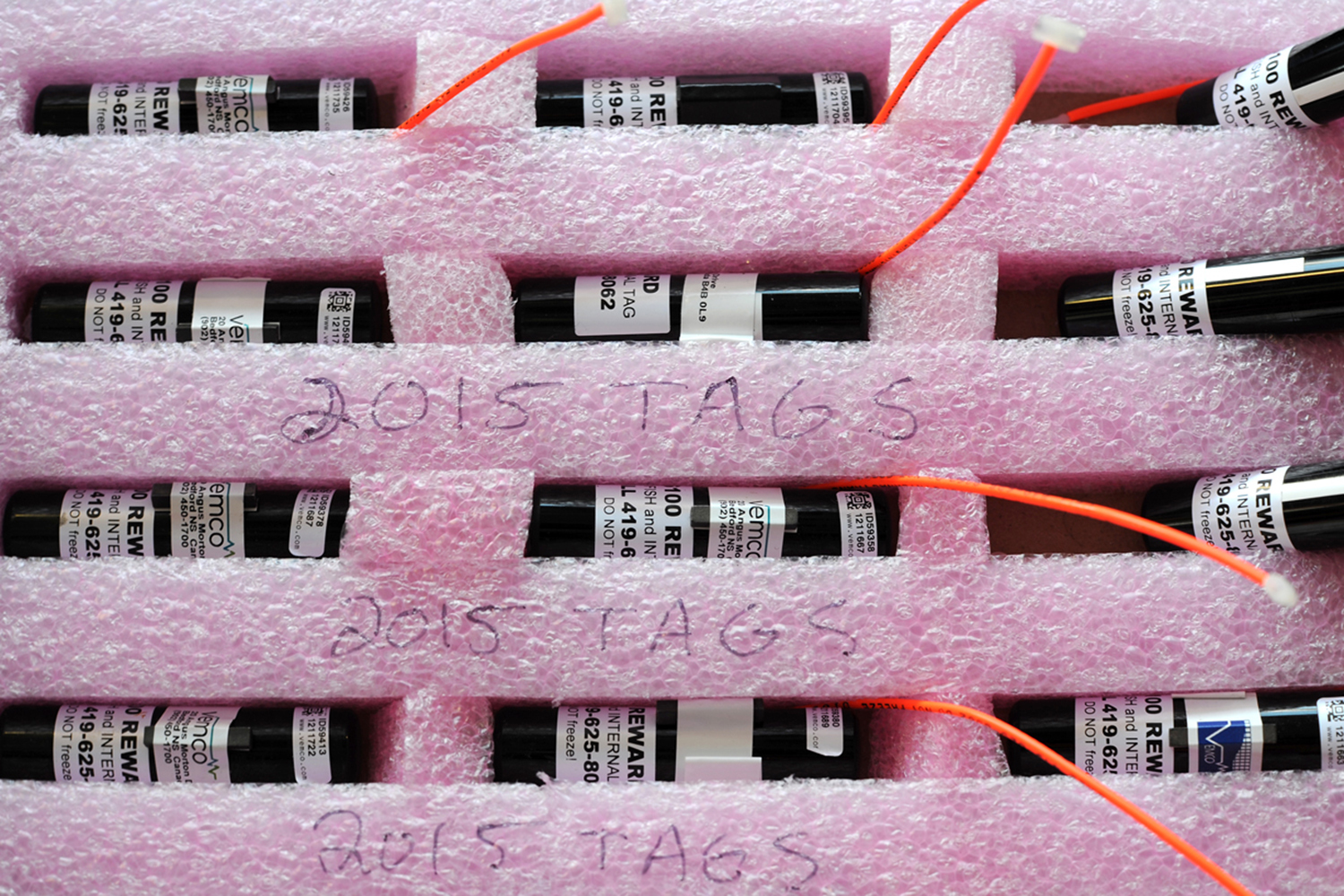
“Ninety percent of the charter boats are in the Western Basin of the lake, but the telemetry study has proven that most of the year, only about 10 percent of the fish are there,” Robertson says. “That study has confirmed what dialed-in walleye guys have known for years. After the spawn, the bigger fish are always moving east all the way to New York waters, chasing cooler temperatures and baitfish. But it’s also shown that a lot of the smaller fish from all those successful years aren’t making that run. So if you’re a charter captain in the Western Basin, come summertime, you’re going to be hanging your lures in front of mainly small fish.”
When Robertson was in his 20s, he’d think nothing of hauling his boat for hours to Erie, Pennsylvania, or farther to stay on trophy fish. These days, with help from the telemetry study data, he’s able to get a better understanding of where to target big fish closer to home, because even when most of the fish are doing one thing, there will always be outliers that don’t follow the crowd.
By the book, Erie walleyes spawn in the rivers of the Western Basin, hang around offshore from the river mouths for a time, and then move to the Central Basin, to the Eastern Basin, or north to Lake Huron in summer before migrating back in the fall. What has been most surprising to Faust is the nonlinear nature of those movements.
“In late October, as an example, conventional angler wisdom says most of the fish are going to be off Cleveland and continually pushing west,” Faust explains. “But we now know that’s not the case. They could be in Cleveland one week and then the next week, for whatever reason—like perhaps they’re following forage fish—they’re back east off Erie, Pennsylvania, where Ohio anglers aren’t going to catch them. The data really points out these exceptions. Like 75 percent of the fish are doing what you expect them to do, but 25 percent are doing something completely different.”
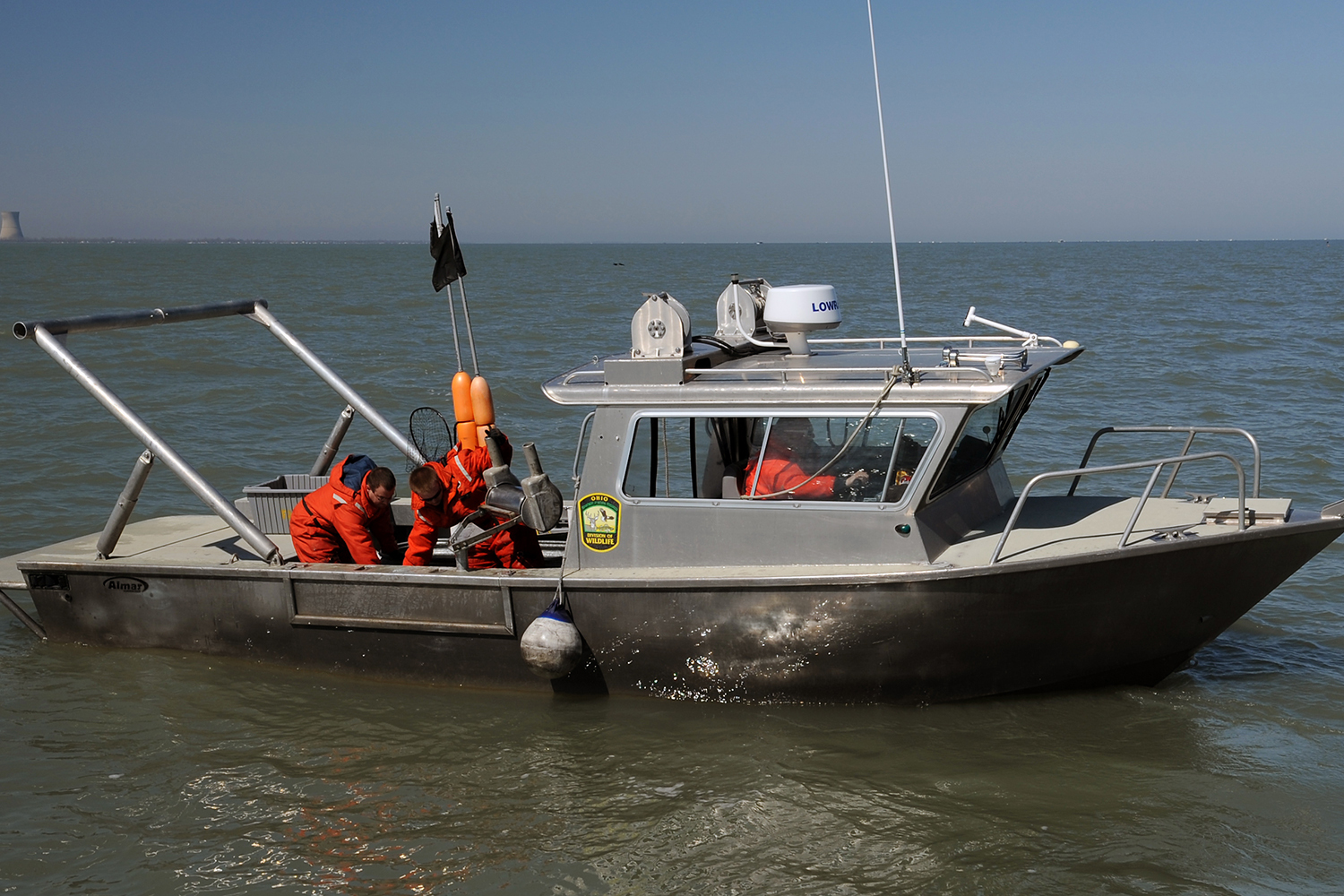
Even though the telemetry study data is public information, Faust admits one shortcoming is the lag in packaging it for fishermen. It’s difficult to present findings in real time, which forces the DOW to release data compiled after a year of monitoring.
“I think the most important thing this study shows is what the walleyes are doing consistently year after year,” says Faust. “Though it’s probably fair to say fishermen aren’t using that data enough right now. But on the flip side, the managers are using it to refine their models and incorporate new information as quickly as possible so we don’t make a decision that’s going to negatively impact the sustainability of the fishery. We want to make sure anglers keep going out there and catching.”
Robertson agrees that right now, not enough anglers are using the telemetry study to their advantage. But even if your average Erie walleye angler is paying the migration data no mind, they should be grateful that the DOW cares so much about supporting what they love. As Faust put it, “Everything we’re doing is to try to better improve or inform fisheries management on Lake Erie. It’s not like high science. There’s no ivory tower side of this.”
I still maintain that unless you’ve got a jar of tartar sauce just burning a hole in the fridge, there are more exciting fish to catch than walleyes. But that doesn’t mean I don’t have a deep appreciation for the work Faust and his team are doing. Frankly, I’m jealous, because I’d give anything to have this level of tracking data on species like striped bass and smallmouths closer to home. More impressively, the longer the study continues, the more conclusions can be drawn about why fish move, not just where they go.
“I think patterns are already emerging that start to let us answer questions we couldn’t before,” Robertson says. “As this study expands, we might be able to determine if our fish are moving from one location in a given year because there’s not enough food, or are they just scouting out a new area that they may never return to again? Once we can use this study to answer more of the why, it’s just going to be even more beneficial. The more you can get your head around the big picture on any body of water, the more fish you’re going to catch.”
This story originally ran in the Migrations Issue of Outdoor Life. Read more OL+ stories.
